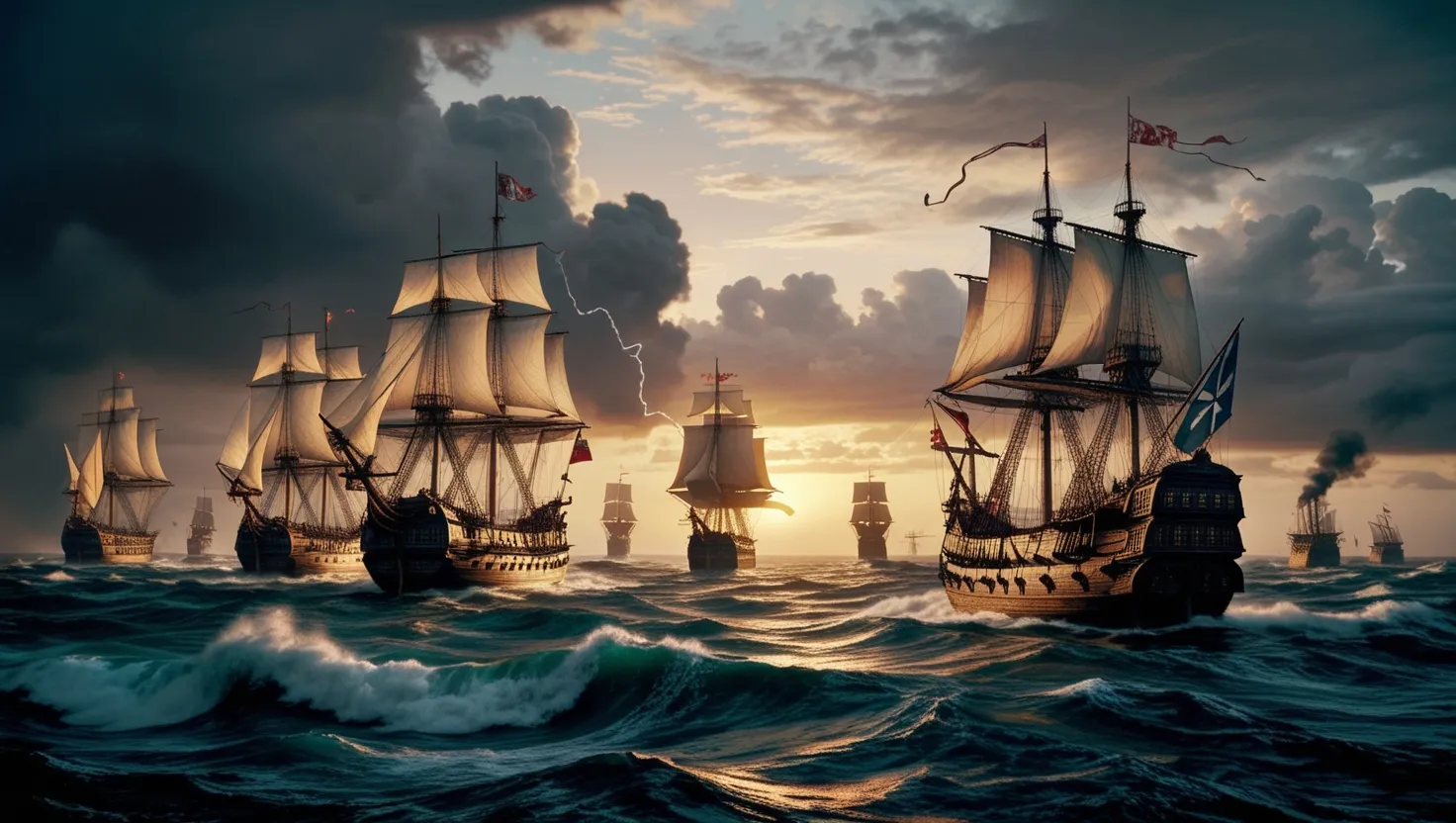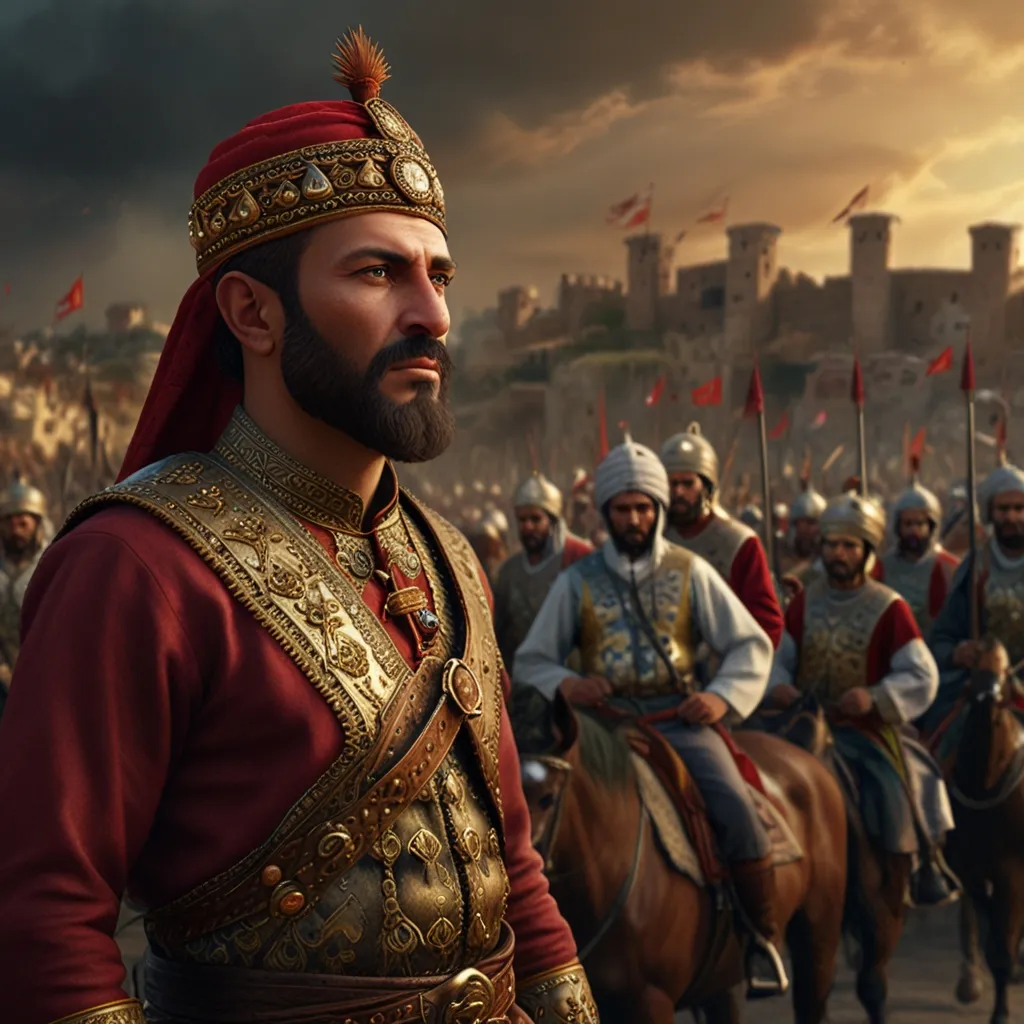The clash of wood and steel, the roar of cannon fire, and the salty spray of the sea - these are the elements that have shaped the course of history through naval battles. As we sail through time, we encounter five pivotal engagements that not only altered the tides of war but also revolutionized maritime strategy and technology.
Our journey begins in 480 BCE, in the narrow straits between mainland Greece and the island of Salamis. Here, the Greek fleet faced an overwhelming Persian armada. The Persian King Xerxes, confident in his numerical superiority, expected an easy victory. But the Greek commander Themistocles had a different plan.
Themistocles lured the Persian fleet into the confined waters of the strait, where their numbers became a hindrance rather than an advantage. The Greek triremes, more maneuverable in the tight space, rammed and sank the Persian ships with ruthless efficiency. This battle introduced a revolutionary concept: strategy could trump sheer force.
The Greek victory at Salamis wasn’t just a military triumph; it was a turning point for Western civilization. Had the Persians won, the flourishing of Greek culture - which laid the foundations for much of Western thought - might never have occurred. As the Greek historian Herodotus later wrote, “Great deeds are usually wrought at great risks.”
Fast forward to 1571, and we find ourselves in the waters off Lepanto, Greece. Here, the Holy League - a coalition of Catholic maritime states - faced off against the Ottoman Empire in what would be the last major battle fought entirely between galleys.
The Battle of Lepanto was a clash of civilizations, pitting Christian Europe against the expanding Islamic Ottoman Empire. The stakes were high, and both sides knew it. As Miguel de Cervantes, who fought in the battle, later wrote in Don Quixote, “Freedom is one of the most precious gifts that heaven has bestowed upon men; no treasures that the earth holds buried or the sea conceals can compare with it.”
The Holy League’s victory halted Ottoman expansion in the Mediterranean and marked the beginning of the end for galley warfare. The battle showcased the superiority of cannon-armed ships over traditional galleys, setting the stage for the next evolution in naval combat.
But what happens when a seemingly invincible armada meets its match? We find out in 1588, as the Spanish Armada sails towards England. King Philip II of Spain had assembled a fleet of 130 ships, confident in his ability to invade England and depose Queen Elizabeth I.
The English, led by Sir Francis Drake, had other ideas. Their smaller, more agile ships harried the Spanish fleet, using hit-and-run tactics and fireships to devastating effect. The Spanish formation, designed for boarding actions, proved ineffective against the English long-range gunnery.
The defeat of the Spanish Armada wasn’t just a victory for England; it was a paradigm shift in naval warfare. As Drake himself said, “There must be a beginning of any great matter, but the continuing unto the end until it be thoroughly finished yields the true glory.”
This battle ushered in a new era of naval combat, one where artillery and maneuverability took precedence over size and boarding strength. It also secured England’s place as a rising naval power, setting the stage for its future maritime empire.
Our fourth battle takes us to the waters off Cape Trafalgar in 1805. Here, the British Royal Navy under Admiral Horatio Nelson faced the combined fleets of France and Spain. Nelson, outnumbered and outgunned, chose to break with convention.
Instead of forming the traditional line of battle, Nelson divided his fleet into two columns and drove them perpendicularly through the enemy line. This audacious tactic, later known as “crossing the T,” allowed the British to concentrate their firepower while disrupting the enemy formation.
Nelson’s victory at Trafalgar established British naval supremacy for the next century, shaping the geopolitical landscape of the 19th century. His famous signal before the battle, “England expects that every man will do his duty,” became a rallying cry for generations of sailors.
But what about the battle that changed naval warfare forever? For that, we must sail to Hampton Roads, Virginia, in 1862, during the American Civil War.
Here, two ironclad warships - the USS Monitor and the CSS Virginia (formerly USS Merrimack) - faced off in the first battle between armored ships. The engagement lasted for hours, with cannon fire bouncing harmlessly off iron plates.
While the battle itself ended in a tactical draw, its impact was monumental. Overnight, wooden navies around the world became obsolete. As one observer noted, “Yesterday’s mightiest warship became today’s museum piece.”
The Battle of Hampton Roads heralded the dawn of modern naval warfare. It sparked an arms race in naval technology, leading to rapid advancements in ship design, armor, and weaponry.
These five battles, spread across more than two millennia, showcase the evolution of naval warfare and its profound impact on world history. They remind us that innovation, strategy, and courage can overcome seemingly insurmountable odds.
But what lessons can we draw from these engagements? How do they relate to our modern world, where cyber warfare and unmanned drones are becoming increasingly prevalent? Perhaps the key takeaway is that adaptability and innovation are crucial in any field, not just warfare.
As we reflect on these pivotal moments in maritime history, we might ask ourselves: What will be the next game-changing innovation in naval technology? How will future conflicts at sea shape the course of history?
In the words of the ancient Greek philosopher Heraclitus, “The only constant in life is change.” This holds true for naval warfare as much as any other aspect of human endeavor. As we face the challenges of the future, both on sea and land, we would do well to remember the lessons of these historic battles.
The strategies employed at Salamis, the technological leap at Lepanto, the tactical innovations of the Spanish Armada’s defeat, Nelson’s daring at Trafalgar, and the revolutionary impact of ironclads at Hampton Roads - all these serve as testaments to human ingenuity and the power of strategic thinking.
As we navigate the uncharted waters of our future, let us carry with us the spirit of innovation and adaptability that these naval battles exemplify. For in doing so, we ensure that we are prepared not just for the conflicts of tomorrow, but for all the challenges that lie ahead on our voyage through history.






